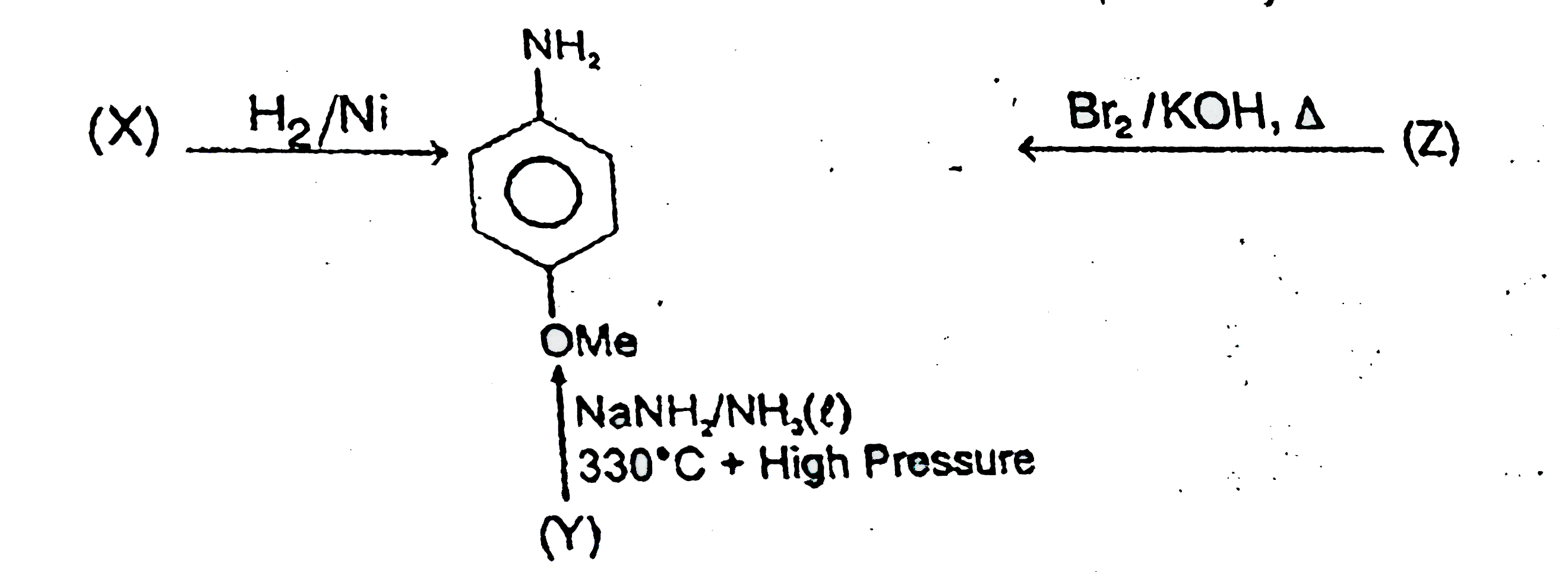The K of AgCl, AgBr and Agl are X, y and z respectively. On addition of AgNO3, in the equimolar solution of CI− Br− and I− ions, Agl Ist appears as precipitate followed by AgBr, and then AgCl. The relation between x y and z is
x > y > z
y < z < X
y < z < X
X= y = Z
The correct Answer is:4
To solve the problem, we need to analyze the solubility products (Ksp) of the silver halides: AgCl, AgBr, and AgI. The question states that when AgNO3 is added to an equimolar solution of Cl^-, Br^-, and I^- ions, AgI precipitates first, followed by AgBr, and then AgCl.
1. Understanding Precipitation:
- When a salt is added to a solution containing its ions, a precipitate forms if the ionic product (IP) exceeds the solubility product (Ksp) of that salt.
- The order of precipitation indicates the relative Ksp values of the salts involved.
2. Identifying the Order of Precipitation:
- According to the problem, AgI precipitates first, followed by AgBr, and finally AgCl. This means that AgI has the lowest Ksp, while AgCl has the highest Ksp.
3. Establishing Relationships:
- Since AgI precipitates first, it has the smallest Ksp value, which we denote as Z.
- AgBr precipitates next, indicating that its Ksp value (Y) is higher than that of AgI but lower than that of AgCl.
- AgCl precipitates last, meaning it has the highest Ksp value (X).
4. Conclusion:
- From the order of precipitation, we can conclude:
- Ksp(AgI) < Ksp(AgBr) < Ksp(AgCl)
- In terms of our variables, this translates to: Z < Y < X.
5. Final Relation:
- Rearranging gives us the relation: X > Y > Z.
Final Answer:
The relationship between the Ksp values is: X > Y > Z.
- When a salt is added to a solution containing its ions, a precipitate forms if the ionic product (IP) exceeds the solubility product (Ksp) of that salt.
- The order of precipitation indicates the relative Ksp values of the salts involved.
- According to the problem, AgI precipitates first, followed by AgBr, and finally AgCl. This means that AgI has the lowest Ksp, while AgCl has the highest Ksp.
- Since AgI precipitates first, it has the smallest Ksp value, which we denote as Z.
- AgBr precipitates next, indicating that its Ksp value (Y) is higher than that of AgI but lower than that of AgCl.
- AgCl precipitates last, meaning it has the highest Ksp value (X).
- From the order of precipitation, we can conclude:
- Ksp(AgI) < Ksp(AgBr) < Ksp(AgCl)
- In terms of our variables, this translates to: Z < Y < X.
- Rearranging gives us the relation: X > Y > Z.
The relationship between the Ksp values is: X > Y > Z.
Similar Questions
In the following reaction X,Y and Z are respectively :

View SolutionThe angle between the lines 2x=3y=−zand6x=−y=−4z is
View SolutionFind the angle between the lines 2x=3y=−z and 6x=−y=−4z
View SolutionFind the angle between the two lines 2x=3y=−zand6x=−y=−4z.
View SolutionThe acute angle between the planes 2x−y+z=6 and x+y+2z=3 is
View SolutionAssertion:Addition of silver ions to a mixture of aqueos sodium chloride and sodium bromide solution will first precipitate AgBr than AgCl.
Ksp of AgCl>Ksp of AgBr.
View SolutionFind the angle between the planes 3x+y+2z=1 and 2x−y+z+3=0.
View SolutionFind the angle between the plane: 2x−y+z=4 and x+y+2z=3
View SolutionBr2+NaOHR.T.−−→Y+Z
If Y gives precipitate with AgNO3, then Z does not undergo reaction with:
View SolutionBr2+NaOHR.T.−−→Y+Z
If Y gives precipitate with AgNO3, then Z does not undergo reaction with:
View Solution
